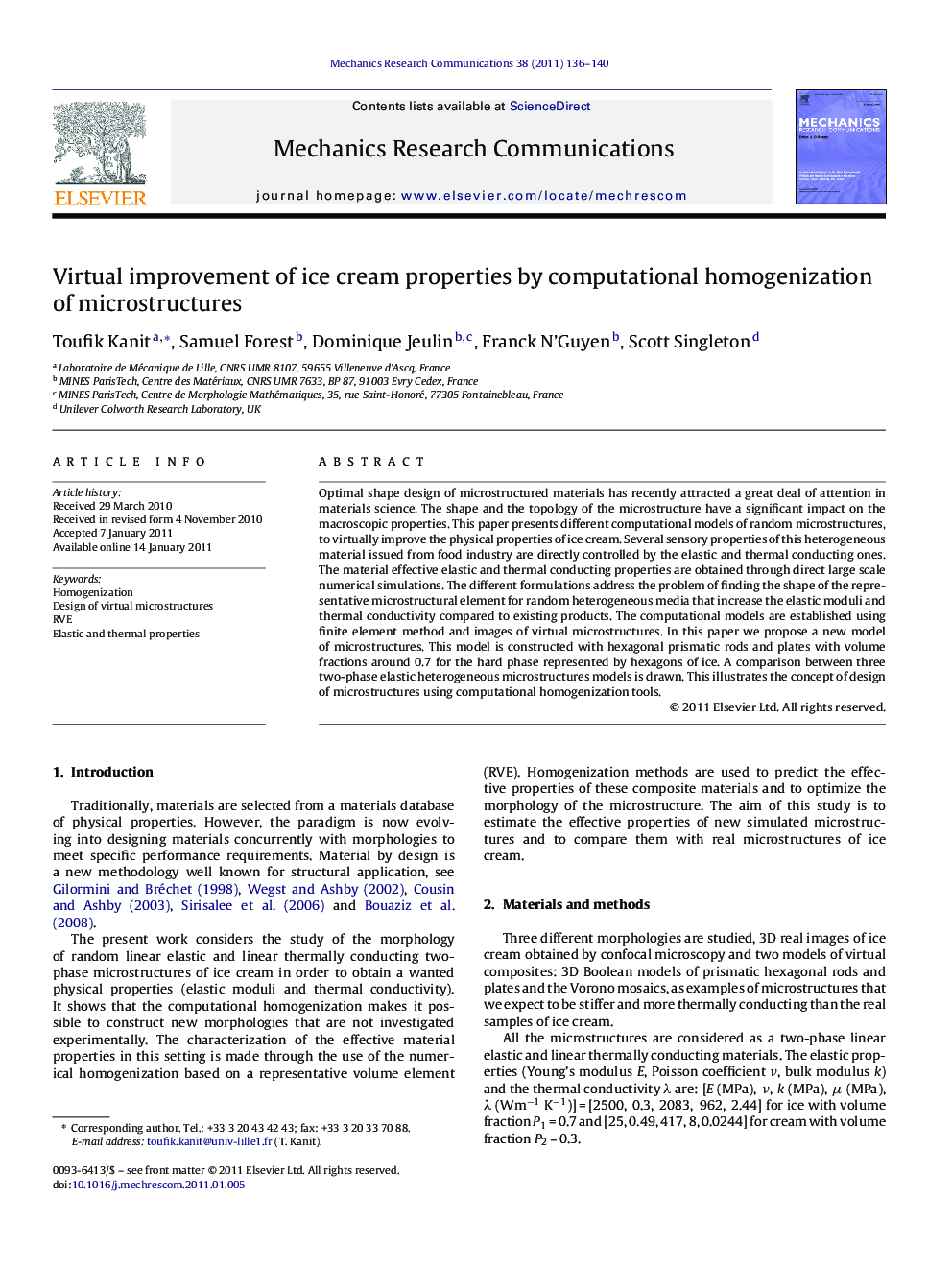| Article ID | Journal | Published Year | Pages | File Type |
|---|---|---|---|---|
| 803682 | Mechanics Research Communications | 2011 | 5 Pages |
Optimal shape design of microstructured materials has recently attracted a great deal of attention in materials science. The shape and the topology of the microstructure have a significant impact on the macroscopic properties. This paper presents different computational models of random microstructures, to virtually improve the physical properties of ice cream. Several sensory properties of this heterogeneous material issued from food industry are directly controlled by the elastic and thermal conducting ones. The material effective elastic and thermal conducting properties are obtained through direct large scale numerical simulations. The different formulations address the problem of finding the shape of the representative microstructural element for random heterogeneous media that increase the elastic moduli and thermal conductivity compared to existing products. The computational models are established using finite element method and images of virtual microstructures. In this paper we propose a new model of microstructures. This model is constructed with hexagonal prismatic rods and plates with volume fractions around 0.7 for the hard phase represented by hexagons of ice. A comparison between three two-phase elastic heterogeneous microstructures models is drawn. This illustrates the concept of design of microstructures using computational homogenization tools.
